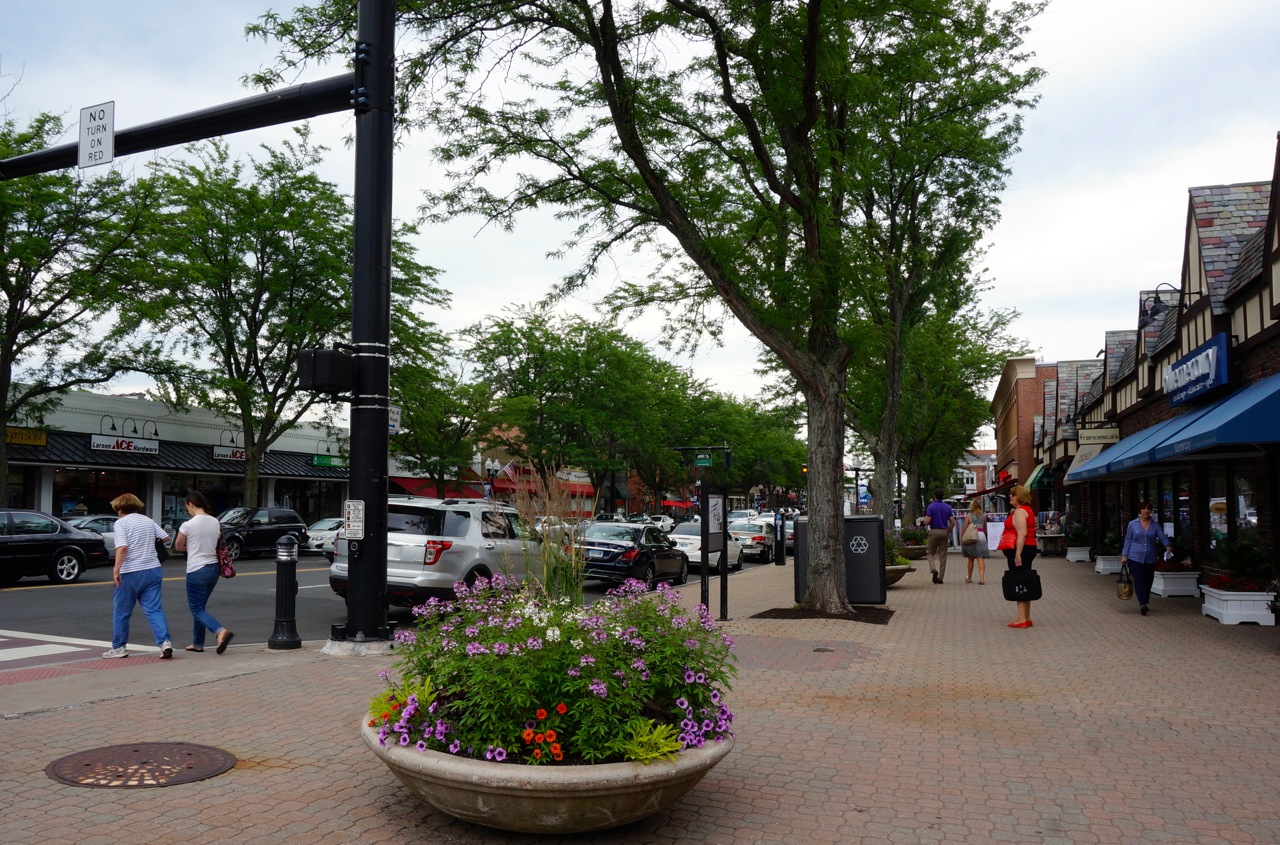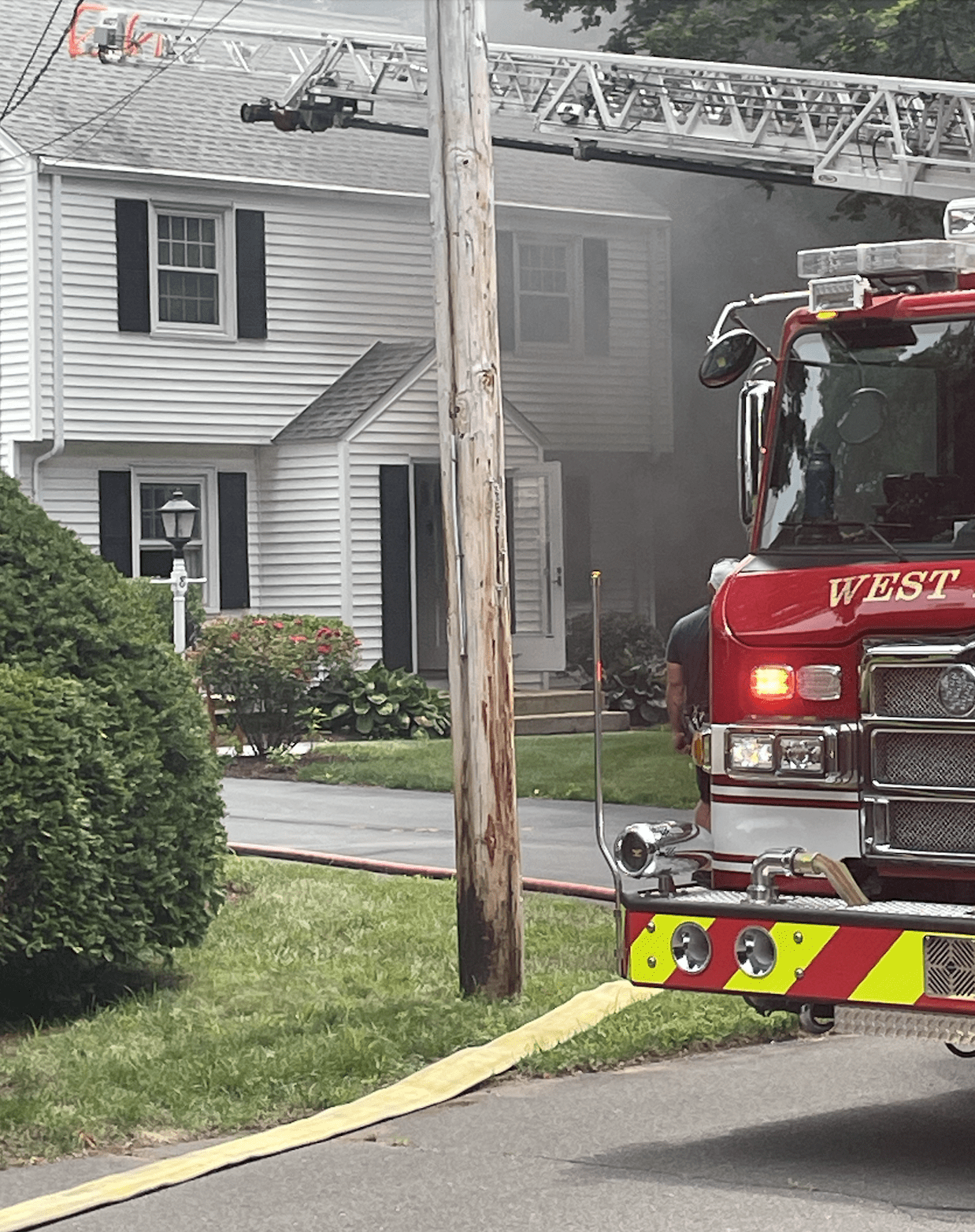Committee Considers Offering New Zoning Incentives to Foster Development in West Hartford Center

Audio By Carbonatix

West Hartford Center. Photo credit: Ronni Newton (we-ha.com file photo)
Plans are for submission of an ordinance to the West Hartford Town Council in September.
By Abigail Albair, West Hartford Press Editor
Editor’s Note: This article first appeared in the July 20 edition of The West Hartford Press. To request a copy of the weekly newspaper and to read more visit turleyct.com.
The Town Council is planning to entertain an ordinance in the coming months to create new incentive-based zoning standards for the Central Business zone.
The Council’s Community Planning and Community Services Committee reviewed a draft of the ordinance July 18 – the latest step in a process to foster development in West Hartford Center that is consistent with resident interests.
Last month, the Town Council formally adopted a Vision Statement and Guiding Principles for the Central Business Zoning District for the Center to be considered by the governing body when evaluating future development in the BC zone, and to be shared with BC zone property owners considering redevelopment or new investments.
Those were the result of months of working group meetings, public outreach and surveys to gather feedback. The Town Planning and Zoning Department then presented its findings regarding public opinion of future development in the Center to the community planning committee in May before the statement was adopted.
The review of the Central Business District zone came about following the failure of two zoning ordinance changes before the Town Council. Both had to do with density and requested an increase as part of a special development district application in a building’s maximum allowed floor area ratio, which is currently 1.25.
Although several buildings in the Center were constructed prior to the current ordinances, and therefore already exceed the allowed FAR, such as the building on the corner of Farmington Avenue and South Main Street that houses Bruegger’s Bagels, many residents raised concerns with the type of structures that may be approved if the FAR were increased.
The latest ordinance that the committee reviewed this week would make no changes to the underlying maximum in the FAR allowance, but would give developers an opportunity in an SDD application to ask for an FAR bonus for specific types of development as a means of incentivizing growth to “derive some public benefit or good,” Town Planner Todd Dumais explained.
“Owners of commercial properties within West Hartford Center routinely approach the town about possible reinvestment in their properties, but current zoning ordinances sometimes prohibit the types of reinvestment ideas being contemplated,” the draft ordinance explains, noting that, based on public response during an outreach process over the last several months – including a public forum held in February and a survey conducted that garnered more than 700 responses – “It is believed that some targeted incremental intensification of development can be accomplished in West Hartford Center without negatively impacting surrounding residential neighborhoods, provided that it is done appropriately.”
One thing the ordinance looks to incentivize is affordable housing development, defined as “a development containing a residential component in which not fewer than 15 percent of units are subject to covenants or restrictions which ensure that they will be sold or rented at, or below, prices which will preserve those units as housing for which persons and families pay 30 percent or less of income, where such income is less than or equal to 80 percent of the median income.”
Per the draft, the number of units in such a development that are designated as affordable can be excluded in determining the maximum number of units permitted on a lot.
“In no case, however, shall the total of all dwelling units provided exceed 115 percent of that allowed in the district,” it explains.
For example, Dumais said, with the maximum of 43 residential units per acre, “What we’re saying is you can build an additional six on top of that if 15 percent [of the development] is affordable.”
The FAR of the affordable units will be excluded in determining maximum FAR, the draft explains.
Infill developments are another type of development the town is hoping to attract. To do so, the ordinance would allow the floor area of the ground floor to be excluded in determining maximum FAR.
“We have more interrupted space within our Center of a non-activated or attractive street front than other communities, particularly on LaSalle Road and Farmington Avenue east of the Center,” Dumais said. “We’re trying to incentivize building out an attractive street wall … so we’re not interrupted by broad expanses of parking lots.”
Corporation Counsel Pat Alair noted, however, “If you can’t park it, you can’t build it,” meaning any infill development would have to meet parking requirements within its SDD, so a building could not be put over an existing parking lot without sufficient spaces remaining.
With regard to parking, the ordinance would exclude the floor area of any private parking garage providing dedicated parking spaces for the use of residential or commercial occupants of the lot and/or invitees from determining maximum FAR, provided the parking garage is fully enclosed by landscaping, architectural screening, active commercial or residential spaces, and that it is located on the first story above finished grade or below ground.
Other incentives aim to attract historic preservation developments by excluding each square foot of floor area preserved within a historic building structure from determining maximum FAR, and to encourage public open space by excluding two square feet of floor area ratio in determining maximum FAR for each square foot of public open space provided.
“This is something that we heard very loudly during the planning process,” Dumais said. “We don’t have enough public space [in the Center.] We have private space and outdoor dining, but not enough public space.”
The ordinance would also exclude 10 square feet of floor area from determining maximum FAR for each $1,000 of installed cost of public art.
To qualify, an expert-prepared report documenting installation costs and the art’s appraised value must be provided to the Council.
“It’s a small allowance but of meaningful benefit to the Center as a whole,” Dumais said, noting with regard to the qualification, “We want to make sure no one can create any type of commercial advertising and claim its art.”
In all cases, in order for the FAR bonus to be allowed, the Council would have to determine when considering the SDD application that “the development is of a contextually sensitive design and appropriate scale, that adequate parking exists to meet the demand of the existing and proposed development, that the development is in harmony with the open feeling and presence of natural light within the public realm of the district, that adequate street capacity exists on adjacent streets to accommodate the traffic projected to result from any increased intensity of use above that allowed as of right, and that appropriate bicycle and pedestrian amenities, such as but not limited to bicycle storage and/or parking, park benches and pedestrian walkways are provided,” the draft of the ordinance details.
Deputy Mayor Leon Davidoff noted that a few of those points are subjective, to which Dumais agreed, and said the decision would be up to the Council’s discretion.
“The Center has grown organically over the decades and each site is completely unique unto itself based on what’s built around it,” he said.
One change that is not part of the ordinance is a change to building height.
The height of buildings in the BC zone is currently limited to four stories for mixed-use structures and that will remain the same, Dumais said.
“One of the concerns expressed [by residents] was around the perimeter to make the maximum height lower,” Alair said. “The problem is, that violates the uniformity requirement, which is a state requirement.”
The maximum height allowance could be lowered throughout the zone, or a new zone could be created around the perimeter and the zone of existing properties within it be changed, but both those options would put dozens of buildings into legal nonconformance which would “dramatically impact property insurance” and create other problems for building owners.
“Then we thought, what if we tried to incentivize people to lower the height? And there was just no way to do that,” Alair said. “The cost of having your building be another story lower offsets any gain we might offer you through FAR or anything else.”
A few members of the working group were present at the committee meeting and asked for a final meeting with town officials and the consultant from Fitzgerald & Halliday who worked with the group on the public outreach process.
The committee decided to table the matter until next month to allow that meeting to take place, as well as to allow new Town Manager Matt Hart, who was present at the committee meeting, to formally begin his position July 31.
The goal is to put the ordinance on an early September Town Council agenda so it can be set for public hearing.
Like what you see here? Click here to subscribe to We-Ha’s newsletter so you’ll always be in the know about what’s happening in West Hartford!




[…] ordinance is part of an ongoing effort to foster development in West Hartford Center that is consistent with res…, including public outreach and surveys to gather […]